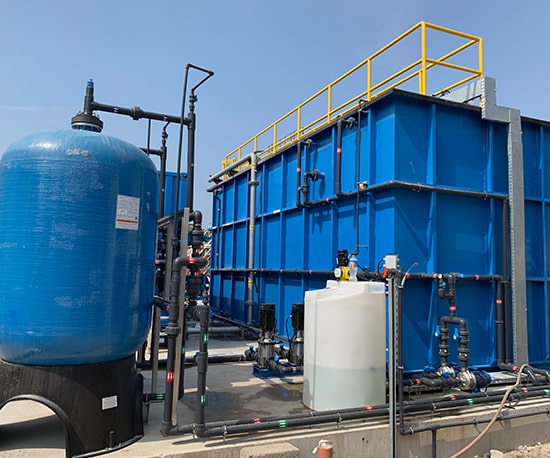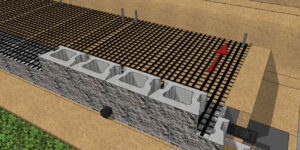
How Your Carbonated Drinks Are Made
Soda pops are common, a staple of modern culture, and they go surprisingly well with fast foods of just about every kind. But we don’t really know how these drinks are made, unlike fast food prepared in kitchens right next to where we eat it.
Take, for example, the water used there. It is not some regular water from a hydro water company, but a very highly pure form of water that is undrinkable as it is because it is too pure to do so.
Here, we will only be looking into the manufacturing process, and not the research and development that goes into making a flavor, recipes, and the thousands of other steps needed to get into the manufacturing process in the first place. So, let’s get into it.
The Manufacturing Process
Soft drinks, carbonated beverages, soda, or whatever they are called in your region, are typically made through a combination of water, sweeteners, flavorings, and carbonation. The process may vary slightly depending on the specific type of soft drink being produced, but the general process of making them is mostly similar.
Clean, Pure Water
The first step in making soft drinks is to purify and filter water. Clean, potable water is essential as it forms the base of the beverage. The process of carbonation relies on dissolving carbon dioxide (CO2) in water under pressure. Using impure water can lead to issues with the dissolution of CO2 or affect the stability of the carbonation, leading to inconsistent levels of fizz in the final product. This makes water purity of utmost importance in the production of soft drinks, and the specific type of water used is called Ultrapure water. It is made using a mixture of a water deionization system and Reverse Osmosis (RO), processes that help remove impurities and ions from the water.
Of course, making up the majority of the beverage makes it the most important as well. Impurities or contaminants in the water can negatively impact the taste and overall quality of the final product. Even minor off-flavors or odors in the water can be readily detected in the finished beverage. That means to maintain product consistency, it’s crucial to use water with a consistent composition. Variations in water quality can lead to variations in the taste and appearance of the soft drink, which can be undesirable for consumers who expect a uniform product. So, ultrapure pure water’s consistency is often the most sought-after.
This isn’t just about the taste, either. Water used in soft drink production must be safe for consumption. Contaminants in the water, such as bacteria, viruses, or chemicals, can pose health risks if not properly treated and filtered. Ensuring water purity is a fundamental step in producing safe soft drinks, and since water can be taken from a range of sources, it is always best to make it as safe as possible.
Lastly, soft drink manufacturers are subject to various regulations and quality standards to ensure the safety and purity of their products. Using pure water helps companies meet these regulatory requirements and maintain consumer trust, as a single consistent level of purity can help ensure they are complying with regulations. Selling sodas manufactured with highly varied levels of water purity can trap them in regulatory hell, leading to lawsuits and even complete shutdowns unless a single, consistent recipe is maintained.
Flavoring and Sweetening & Adding the Taste
Of course, pure water simply provides a consistent base free from any flavoring, taste, and even the taste that regular water has. That gives soda manufacturers the most basic foundation to work with, as they can set up their custom flavors and tastes accordingly, which are manufactured separately as well.
-
The next step is to add sweeteners, such as high-fructose corn syrup, sugar, or artificial sweeteners, to the water. The type and amount of sweetener used depend on the desired taste and calorie content of the soft drink.
-
Flavoring ingredients are added to the sweetened water to give the soft drink its distinct taste. These flavorings can be natural extracts, artificial flavors, or a combination of both. The flavoring process is a closely guarded secret for each soft drink brand, and the specific blend of flavors is what makes each product unique.
-
Carbonation is what gives soft drinks their characteristic fizz. Carbon dioxide (CO2) is either dissolved into the water under pressure or added as a carbonated syrup. This step is essential for creating the ‘effervescence’ in the beverage. The level of carbonation can be adjusted to achieve the desired amount of fizz.
-
Acidulants, such as citric acid or phosphoric acid, are optional and may be added to provide a slightly tangy or sour taste. These ingredients can also help balance the sweetness and enhance the overall flavor.
-
To extend the shelf life of the product, some soft drinks may also include preservatives, such as sodium benzoate or potassium sorbate. Stabilizers and emulsifiers may also be added to maintain consistency and prevent separation of ingredients. Ultrapure water also enhances the shelf life, as a higher quality water can stay that way for longer.
Treatment and Mixing
All the ingredients are thoroughly mixed and blended to ensure uniform distribution of flavors, sweeteners, and carbonation. Some soft drinks undergo pasteurization as well, a heat treatment process that helps extend shelf life by killing harmful microorganisms. However, not all soft drinks are pasteurized. Pasteurization occurs either in bulk, where it happens all at once in a single container, or separately.
Quality Testing
The mixture is typically filtered to remove any impurities, and quality control tests are conducted to ensure the product meets the desired taste and quality standards. The finished soft drink is filled into bottles, cans, or other containers, and these containers are sealed to prevent carbonation from escaping. The containers are then labeled and packaged for distribution.
Throughout the production process, quality control measures are in place to ensure that the soft drinks meet safety and taste standards. This includes sensory evaluation, pH testing, and various other checks.
Once packaged, soft drinks are ready for distribution and can be enjoyed by consumers. It’s important to note that the specific ingredients and processes can vary among different brands and types of soft drinks, and some companies may use alternative sweeteners and flavorings to create diet or sugar-free versions.



